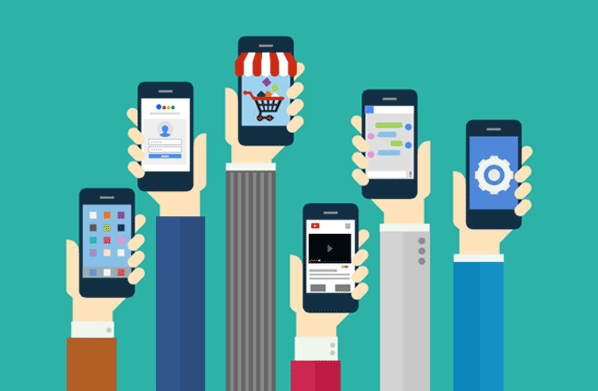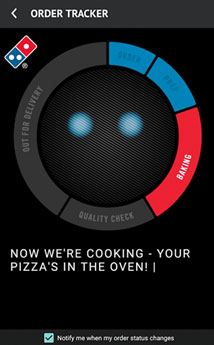
The era of the smartphone is now, and it certainly won’t be dying down anytime soon. In order to stay competitive, businesses need to create a user-friendly journey for their customers, regardless of what device is being used. Having a website that isn’t mobile-friendly in 2018 means you can say goodbye to leads and customers.
While it’s necessary to make sure that your company’s website is mobile-friendly, it’s equally important to consider whether you could benefit from a mobile app. Not only are consumers using their smartphones and tablets to browse the internet, but their app usage is increasing rapidly; investing in an app could be the solution to increase your business’ offering. In fact, by 2020, mobile apps are predicted to generate around $189 billion dollars worldwide. With this in mind here are four reasons why your business needs to invest in a mobile app in 2018.
1. Generate Customer Loyalty
For the majority of businesses, the art of finding, targeting and obtaining new customers is considered a top priority. However, with the cost of customer acquisition on the rise, it is essential that businesses focus on achieving customer loyalty. It is estimated that a 5% increase in customer retention can increase a company’s profitability by 75%, while 70% of existing businesses believe it’s cheaper to retain a customer than trying to attract new ones.
Perhaps you’ve spent several hours with your marketing team trying to formulate the best strategy for generating more engagement with, and purchases from, your customers. You want to increase their interaction with your business to promote sales, but you also want to provide your customers with a level of value that they cannot receive anywhere else. What can you do to achieve both?
Creating a customer loyalty scheme within a mobile app is a tactful way of encouraging repeat purchases and guaranteeing a return on investment (ROI) from developing an app. By adding exclusive incentives for those who use your app, your business can successfully tap into the devices where consumers are spending most of their time and engage with them further.

Starbucks have utilised their mobile app by offering rewards that are exclusive to app subscribers. Customers are encouraged to purchase in-store to earn ’stars’ (points) which add up to a reward once a certain number have been reached. They are also provided with limited time offers each time they check into the app to keep engaging with the content and they can even place orders through the app. This takes Starbucks beyond the loyalty card scheme that most businesses offer.
In today’s environment, having a loyalty programme isn’t enough – you have to make an effort to differentiate your scheme from others. Overall, the introduction of their mobile app has helped Starbucks to increase their revenue to an astonishing $2.65 billion.
2. Improve The Customer Journey
Nowadays, consumers expect to have an optimised sales experience from initial enquiry to finally completing a purchase, regardless of whether they’re using an ecommerce site, shopping in store or using a mobile app, in fact – 83% of mobile users feel that a seamless experience across all devices is very important.
Considering that almost half of smartphone users now spend more than five hours on their phones a day, failing to invest in a mobile app to encourage more purchases, whilst making it easier for your customers to press the ’buy’ button will simply result in your business missing out on a huge proportion of the mobile-first market.

Dominos have enhanced their customer’s journey by creating a mobile app that allows users to place orders for delivery or in-store pickups removing the need of having to call them directly. Customers can fully customise their order, pay via card and then track the arrival of their order through the order tracker. The reputable mobile app now accounts for 49% of their online orders and has helped their pre-tax profits to surge to £73.16 million, up from £62.1 million in 2014 (UK).
3. Promote Your Products
As consumers become more impatient to locate the products they are trying to source, businesses need to evolve the way in which customers can find their offering. According to Google, more than half of mobile consumers want to purchase within an hour, while 83% want to purchase within a day.
Imagery is continuing to transform the way we search and shop especially for retail businesses. More and more are trying to jump on the bandwagon of making it easier for us to find items of interest without having to trawl through their entire stocklist. Improving the accessibility of your products is a sure way to guarantee an improved user experience (UX) to encourage an increase in sales.
ASOS have introduced a virtual shopping experience entitled ‘Style Match’ which allows customers to upload photos snapped from screen grabs, magazines, etc. to search for similar outfits on the ASOS database. The app is aimed at reducing the need for tedious text searches on smaller mobile devices and increasing sales by showcasing their stock through promoting its discovery with visual search. With 80% of their traffic now derived from mobile devices, ASOS are now on the path to making their customer experience even better through their app.
4. Integrate with Social Media
Social media and mobile app integration is essential, as this is a marketing channel that cannot be ignored. It is estimated that people will spend an average of five years on social media during their lifetime, so integrating your app with social media is a powerful strategic way to generate more downloads, conversions and, ultimately, sales.
Having an app maximises customer engagement with your brand and enables users to easily connect with your company on social media, as well as share your content; this will help to expand your social media reach and generate new followers. If social media sites are integrated with an app, it is highly likely that people will stumble upon the app’s download link while browsing their social media feed, giving you the opportunity to drive consumers to your app and provide a ROI.
It is a known fact that consumers want to complete a purchase in the quickest time possible. When completing an online purchase, the lengthy process of signing up beforehand can often be a big deterrent and cause them to abandon their purchase. Consider allowing users to use their social media credentials (e.g. Facebook account) to sign into your app. Since signing up and logging in for the app is made simpler and faster this way, more people are likely to use the app. Anything businesses can do to create continuity and cohesion for users will undoubtedly generate appreciation. If you are unsure of where to begin with building an app for your business, then there are plenty of app developer experts who can help.




